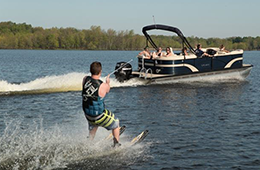Providing a safe working and learning environment is one of many responsibilities schools are tasked with every day. Preventative measures and protocols are important components in a school safety plan and should be thoughtfully prepared and executed. While there are many things to consider to safely protect the school premises and those inside, effective security should include: school and premises access restrictions, trained security personnel and adherence to policies intended to prohibit unauthorized entry.
Consider the following recommendations to protect your employees and students from the potential dangers that can accompany workplace intruders.
Security Personnel To Monitor Entrances
For security purposes, post uniformed security personnel at all regularly used entrances. Security personnel will be responsible for restricting building access and sending all visitors to the office area. Before you hire security personnel, complete a full background check.
If your school budget is restricted, consider tasking staff members to monitor entrances during high traffic times, when students are entering and leaving the building. Ask staff members to monitor for adults and ask them for identification. If they encounter a visitor, they should direct the visitor to the office immediately.
R&R Insurance Best Practice Recommendation: To test your school’s security effectiveness, periodically test how well the security personnel enforce your entry procedures.
Employee Identification Badges
For added safety, you should consider requiring all school employees to wear photo name identification badges at all times. Identification badges will clearly identify permitted individuals so there is no grey area on safe personnel within the school. In addition, this simple step can ensure visitors and students alike will know which qualified personnel to turn to if a problem should arise. Be sure your safety policy includes the retrieval of employee identification badges immediately upon suspension, termination or resignation.
R&R Insurance Best Practice Recommendation: If employees forget their name badges, there should be protocol on how they are able to identify themselves to security personnel and temporary identification should be provided.
Visitor Registration and Identification Badges
Visitors should register at the school office and log in and out using a visitor log. Visitors should be asked to provide photo identification and let the office receptionist know whom they are visiting and the purpose of their visit. It is important to provide visitors with an identification badge that is clearly visible, so staff and students know the visitor is permitted on the premises. Visitor badges should have a date so they cannot be re-used in the future.
If you are having any construction or maintenance work completed at the school, ensure the crew provides you with a personnel roster and that all visitor badges have an appropriate date range.
R&R Insurance Best Practice Recommendation: Consider installing a panic button under the office reception desk so the receptionist can discreetly summon help in threatening situations.
Deliveries and Messengers
In your safety policy, consider including safety procedures for deliveries and messengers. You should require that all deliveries be made in-person at the school office.
If deliveries are intended for specific staff members, the office staff should call the named individual to verify the delivery and ensure the items are expected. Do not allow anyone to leave unexpected or undesired items on school grounds.
R&R Insurance Best Practice Recommendation: In the office, consider having a delivery logbook, where messengers write their name, employer and the date and time of delivery.
Key Control
It is important to establish a key-control system. Consider which employees require a key and what their key should have access to within the school. If a key is lost, consider replacing locks. If an employee is suspended, terminated or resigns, be sure to change keypad combinations and retrieve their key prior to departure.
R&R Insurance Best Practice Recommendation: Be sure that no single key provides unrestricted access to all areas of the building. Consider having a locked and secure master key locker with a copy of all keys used in the building.
Additional Security Measures to Consider:
Secure Parking Areas
If you can, it is a great safety resource to have video-surveillance in school parking lots. At night, parking lot lighting should be bright enough to both deter trespassers and facilitate video monitoring. If video monitoring is not feasible, consider adding a fence around the school premises and have one single entry point to designated parking areas that can be monitored.
Loading Docks
If your school has a loading dock, it is important that the loading dock area is behind locked doors and does not permit access to the inside of the school building. If possible, consider adding video-surveillance. Before any cargo is left on school property, make sure it has been checked and approved by authorized personnel. Be sure to secure dock areas during periods of inactivity.
With the proper preventative measures in place, your school can be prepared to prevent intruders from gaining unauthorized access to your school. If you feel that your school is not adequately prepared, consider the initial steps you can take to improve school safety and reach out to R&R Insurance to obtain additional resources.
Interested in learning how R&R Insurance can improve safety in your school and reduce your costs? Request our free safety resources and case studies or schedule a call with one of our School Group Experts, today. At R&R Insurance, we are committed to helping schools minimize their risks, offering solutions and resources to help build safe environments for staff and students alike.

 As fall creeps in, the risk of a deer-vehicle accidents greatly increases. Deer-vehicle collisions are actually three times more likely to occur on a day in November than they are on any day between February 1 and August 31.
As fall creeps in, the risk of a deer-vehicle accidents greatly increases. Deer-vehicle collisions are actually three times more likely to occur on a day in November than they are on any day between February 1 and August 31.








